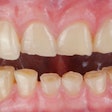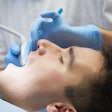Videos uploaded by dental professionals on occlusal device therapy for sleep bruxism may lack informative value, reliability, and clarity. This research was published on December 3 in the Journal of Prosthetic Dentistry.
Additionally, these videos may lack coverage of key topics, including device disadvantages, types, costs, and wear duration, the authors wrote.
"Deficiencies in the educational value, clarity of information, and reliability of YouTube videos concerning occlusal devices for sleep bruxism were identified, highlighting the need for improved dissemination of accurate information to patients," wrote the authors, led by Tay Xiao Thong of the International Medical University School of Dentistry in Malaysia.
To explore the reliability and value of YouTube videos, a process-based audit was used to evaluate how dental professionals deliver information about occlusal devices for bruxism. The audit focused on assessing the educational value (EV), clarity of information (CoI), reliability of information (RoI), understandability of information (UoI), and actionability of information (AoI) of these videos and included 19 videos, according to the study.
The EV of each video was scored using a four-point system across 10 domains, while CoI was evaluated using a three-point system. RoI was assessed based on the Journal of the American Medical Association Benchmark Criteria. The Patient Education Materials Assessment Tool for Audio-Visual Materials was applied to evaluate UoI and AoI.
Out of 10, the mean number of reported domains was 4.68 ± 2.73, with the highest scoring domain being "indications of occlusal device" (1.24 ± 0.87) and the lowest being "cost of occlusal device" (0.00 ± 0.00). The overall EV score per video was 5.61 ± 5.10 (out of 30), while the CoI score averaged 0.55 ± 0.50 (out of two), they wrote.
Furthermore, the RoI score was 1.95 ± 0.40 (out of four), with "attribution" scoring lowest (0.026 ± 0.11) and "currency" highest. On average, the videos demonstrated a mean understandability of 66.6% and actionability of 45.6%. Only 23.33% included informative headers, 33.8% used visual cues to highlight key points, and 66.3% featured easy-to-read text and clear audio.
The study, however, had limitations. Its small sample size may not reflect YouTube's dynamic content, the authors added.
"Given YouTube's popularity among patients seeking information, dental professionals, organizations, and digital technology experts must recognize and address the quality of online content," they wrote.




















